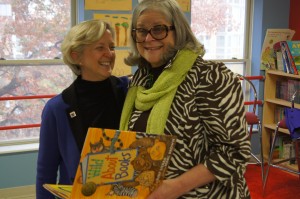new posts in all blogs
Viewing: Blog Posts Tagged with: Partners, Most Recent at Top [Help]
Results 1 - 4 of 4
How to use this Page
You are viewing the most recent posts tagged with the words: Partners in the JacketFlap blog reader. What is a tag? Think of a tag as a keyword or category label. Tags can both help you find posts on JacketFlap.com as well as provide an easy way for you to "remember" and classify posts for later recall. Try adding a tag yourself by clicking "Add a tag" below a post's header. Scroll down through the list of Recent Posts in the left column and click on a post title that sounds interesting. You can view all posts from a specific blog by clicking the Blog name in the right column, or you can click a 'More Posts from this Blog' link in any individual post.

By: DanP,
on 7/23/2014
Blog:
OUPblog
(
Login to Add to MyJacketFlap)
JacketFlap tags:
Economics,
business,
Journals,
Current Affairs,
partners,
glass ceiling,
*Featured,
Business & Economics,
oxford journals,
journal of professions and organization,
andrew von Nordenflycht,
female business partners,
forrest briscoe,
male female pay disparity,
pay inequity,
rainmaking,
smeal,
abramson,
Add a tag
By Forrest Briscoe and Andrew von Nordenflycht
The recent firing of Jill Abramson, the first female executive editor of the New York Times, after less than three years on the job focused the news cycle on gender inequity, with discussions of glass cliffs (women get shorter leashes even when they get the top jobs) and reports showing the persistence of glass ceilings and pay disparities (e.g. Abramson was paid less than her male predecessor). In the United States, women now represent a substantial majority of those earning advanced degrees. Yet as we look higher and higher up the ladders of career attainment, we see smaller and smaller percentages of women – as well as the persistence of pay gaps for women, even in senior positions. In other words, even as women break through one glass ceiling, they encounter another on the next rung.
Take law firms. Women make up almost half of US law school graduates (up from 5% in 1950). But they represent only 20% of US law firm partners and an even smaller share (16%) of the more elite class of equity partners. And the higher one looks within the partnership stratosphere, the less diverse it gets. Furthermore, the leaders of the profession, as well as clients of law firms, express frustration with the slow pace of progress in generating more gender and ethnic equality at the top of the profession. These efforts can be aided by improving our understanding of the work and career processes within law firms and, by extension, partnerships in other professional fields, such as accounting, consulting, and investment banking.
So how exactly do partners rise to different levels within the partnership hierarchy, and how do those processes challenge female partners? To date, researchers have analyzed the challenge of becoming a partner, but we know curiously little about how professional careers unfold after that. Although partners at large law firms may all be one-percenters, they are certainly not equal, with distinctions made between equity and non-equity partners, and recent surveys showing some “super-partners” earn up to 25 times more than their peers.
To get at these questions, we studied how partners gain power within a partnership, as measured by their “book of business” – the fees paid to the firm by clients with whom the partner holds the primary relationship. The more client revenue that a partner is responsible for, the more that partner will hold influence in their firm, command respect, and generate career mobility options in the wider profession. To understand power in a partnership, then, is to understand how partners come to obtain books of business.
What we found was intriguing. In short, although women may be disadvantaged in a primary “path to power” in the partnership, they may have opportunities along a second pathway of growing importance.
The primary pathway involves “inheriting” clients from an established power partner. To build a book of business, one needs to either pursue that strategy, or the alternative of “making rain” by bringing new clients to the firm. A newly minted partner thus needs to decide which path to invest in—or how much to invest in each path. Do you spend time working for clients of power partners nearing retirement—or pounding the pavement (or the cocktail circuit) seeking new clients of your own? Of course, each path has its risks. Investing in the inheritance path can backfire, for example, if a retiring benefactor bequeaths a client to a rival partner. And the rainmaking strategy can backfire if nibbles of new-client business don’t eventually turn into a large revenue stream for the firm. Since both investments require time and energy, what’s the optimal career strategy?

Deepening the puzzle, both paths are also likely to pose particular challenges to female attorneys, as they depend on forming social relationships with either the senior power partners or with decision makers at potential new client firms. Much research shows the existence of “homophily” in interpersonal relationships, or the tendency for people to be drawn to and feel greater affinity for people who are like themselves in terms of race and gender. So where senior partners and/or client decision makers are largely male, female junior partners may be at a disadvantage in forming the bonds of affinity or trust that help win the client business.
Analysis of the internal records of law firms shows, unsurprisingly, that female partners have smaller books of business than their male peers. More interestingly, though, we are finding that the rate of return on investments in the two paths to power differs between men and women. In fact, the inheritance strategy appears to be a particularly poor investment for women. For women, larger investments in the inheritance path are associated with lower future books of business. Why? We speculate this could be because of “selective affinity.” That is, when it comes time for the power partners to pass on their clients, they may unconsciously favor partners who are more demographically similar to them.
Yet, when it comes to the rainmaking strategy, the opposite may be true. For female partners, investments in the rainmaking path appear to pay handsomely. In fact even better than for male partners. Why could that be? Perhaps female partners recruit new clients in different ways than male partners, or perhaps “selective affinity” can actually favor female partners in the open marketplace (rather than the closed ecosystem of the firm’s internal networks).
What does it all mean? First off, for partnerships, there may be considerable value in studying the inheritance and rainmaking processes going on in their own organizations. Virtually all firms now have the relevant internal data waiting to be analyzed. Second, our findings are important for managing diversity in partnerships. For example, the results suggest there could be a “double payoff” to supporting rainmaking efforts for newly-made female partners – double in the sense of the firm’s overall revenue generation as well as diversity goals.
Forrest Briscoe is an Associate Professor of Management in the Smeal College of Business, Pennsylvania State University. His research focuses on careers, networks, and management processes in professional organizations, as well as on the factors that promote and inhibit changes within organizational fields. Andrew von Nordenflycht is an Associate Professor at Simon Fraser University’s Beedie School of Business. His research focuses on the challenges of managing professional services firms, the patterns of professional careers, and the impact of different organizational forms on the performance, creativity, and ethics of professionals. Andrew is the author of the paper ‘Does the emergence of publicly traded professional service firms undermine the theory of the professional partnership? A cross-industry historical analysis’ published in the Journal of Professions and Organization.
Subscribe to the OUPblog via
email or
RSS.
Subscribe to only business and economics articles on the OUPblog via
email or
RSS.
Image credit: Fresh and confident corporate businesswoman, © Squaredpixels, via iStock Photo.
The post Why are women still paid less than men? appeared first on OUPblog.


By: Samantha McGinnis,
on 7/18/2014
Blog:
First Book
(
Login to Add to MyJacketFlap)
JacketFlap tags:
General,
Books & Reading,
Summer Reading,
Partners,
First Book Partners,
feeding sites,
No Kid Hungry,
Share Our Strength,
Summer Learning,
Summer Fun Starter Kits,
Add a tag
 For kids from low-income families, summer doesn’t always mean carefree fun. Many kids have fewer learning opportunities and parents often struggle to find safe, affordable childcare, making summer a time of stress and worry.
For kids from low-income families, summer doesn’t always mean carefree fun. Many kids have fewer learning opportunities and parents often struggle to find safe, affordable childcare, making summer a time of stress and worry.
For more than 21 million kids who rely on free and reduced price meals during the school year, summer is also a time of hunger. Forty three percent of families that rely on school meal programs find themselves without enough food when school is out.
 First Book knows kids need to be nourished in body and mind, during the summer and all year-round. That’s why First Book teamed up with Share Our Strength to support the No Kid Hungry campaign.
First Book knows kids need to be nourished in body and mind, during the summer and all year-round. That’s why First Book teamed up with Share Our Strength to support the No Kid Hungry campaign.
That’s where First Book and the No Kid Hungry campaign can make a difference. The No Kid Hungry campaign is making great strides to connect more kids with free summer meals in their community. So we teamed up with them to also provide high-quality summer learning opportunities at summer meals sites across the country. Books help site leaders keep kids learning in a safe environment, while incentivizing them to return each day and get ready for the upcoming school year.
 This summer, First Book and the No Kid Hungry Campaign teamed up to create Summer Fun Starter Kits, available on the First Book Marketplace. These collections of 25 or 50 great books are a fun, easy way for summer meal sites to incorporate books into their programming. All summer meals sites are encouraged to sign up with First Book to access affordable books for the kids they serve.
This summer, First Book and the No Kid Hungry Campaign teamed up to create Summer Fun Starter Kits, available on the First Book Marketplace. These collections of 25 or 50 great books are a fun, easy way for summer meal sites to incorporate books into their programming. All summer meals sites are encouraged to sign up with First Book to access affordable books for the kids they serve.
There are thousands of summer meal sites across the country, and you can find them in your community by visiting www.nokidhungry.org/summermeals. If you know a site in your community, encourage them to sign up with First Book to help kids grow and learn over the summer.
The post No Kid Hungry: Summer Feeding and Summer Fun appeared first on First Book Blog.


By: Gina Rullo,
on 3/12/2013
Blog:
First Book
(
Login to Add to MyJacketFlap)
JacketFlap tags:
Education,
books,
reading,
Literacy,
First Book,
Reading Is Fundamental,
RIF,
Partners,
First Book Partners,
First Book Supporters,
Add a tag
Carol Rasco, president and CEO of Reading Is Fundamental (RIF), recently answered some questions about the importance of the RIF and First Book partnership that has been established for many years.
 Q: RIF and First Book are sometimes thought of as competitors rather than partners. Could you put this myth to rest and explain the importance of this partnership?
Q: RIF and First Book are sometimes thought of as competitors rather than partners. Could you put this myth to rest and explain the importance of this partnership?
Carol Rasco: RIF and First Book have been close partners for many years. The missions and values of both our organizations are closely aligned, as we both strive to ensure that children in need have the high-quality books and resources they need to be successful.
Far from being competitors, we are strong collaborators! Through our continually growing partnership, more than 1,000 RIF programs across the country are able to access new, quality books for their kids through the First Book Marketplace. At the same time, many of the programs in First Book’s network use our resources for teachers, parents and community volunteers. These materials are developed based on Common Core Standards and cover multicultural favorites and science, technology, engineering, the arts and math themes.
We consider ourselves soldiers in the same war to close the gap of inequity when it comes to educational materials for kids in poverty, and we will continue fighting side by side to get more books into the hands of kids in need.
Q: How have First Book and RIF worked together in the past?
Carol Rasco: For over a decade, First Book has served as a distributor in the RIF Ready Pack program, providing access to low-cost collections of high-quality titles for RIF programs nationwide, through the First Book Marketplace.
In recent years, First Book and RIF have collaborated on numerous special projects such as the distribution of 600,000 new books nationwide in 2010-2011, a joint effort to support programs affected by Superstorm Sandy by providing 1,500 new books to Sandy affected areas in 2012, and, most recently, First Book won the bid to distribute 120,000 books for RIF’s Multicultural STEAM reading collection. I also currently serve, and have served for several years, on First Book’s Advisory Council.
Q: What are RIF and First Book currently working on together?
Carol Rasco: RIF and First Book have recently joined together to distribute one million, brand-new books to RIF programs across the country, thanks to RIF’s long-time partnership with Macy’s! To date 500,000 new books have been distributed to RIF programs serving kids with the highest levels of need and the remaining 500,000 books will be dispersed, through the First Book Marketplace, prior to summer break. This initiative has allowed RIF to maximize our resources and acquire books for our programs through First Book at a cost way below retail price. In addition, the distribution of these books has focused on key times when kids are out of school and in high need for resources, including summer break, when so many children in low-income areas are without the education tools they need to prevent learning loss over the summer months.
Q: What are RIF’s plans for this partnership going forward?
Carol Rasco: We know we can count on First Book’s ongoing support for our RIF programs and we are excited to continue growing our partnership and developing more creative initiatives to get high-quality books into the hands of kids in need!


When one partner has a drinking problem it inevitably impacts their partner, and working together to overcome the problem, can often be the best chance for success. In Overcoming Alcohol Problems: Workbook For Couples Barbara S. McCrady and Elizabeth E. Epstein provide a 12 week program that involves a couple to participate in their professional treatment. Below is an excerpt that shows a common pitfall of supportive partners.
Partners often try to protect the drinker from the consequences of drinking.
The result is that the drinker does not experience negative consequences that would help motivate him or her to quite. The protection helps maintain drinking. For example, you may shield the drinker from the  embarrassment of having the children see him or her in a drunken condition. You may call your partner’s boss and make excuses for absences. You may lie to family and friends to hide the drinking problems.
embarrassment of having the children see him or her in a drunken condition. You may call your partner’s boss and make excuses for absences. You may lie to family and friends to hide the drinking problems.
One common type of protection is to give comfort to the drinker who is suffering from the effects of a drinking episode. Many partners will care for the “sick” person. Instead of suffering the full consequences of the drinking, the drinker gets special attention.
Partners protect the drinker for many reasons. Out of love, they do not want the drinker to suffer. They also do not want the drinking to affect other family members, particularly children. In many situations, the partner wishes to protect the drinker’s job because it is an important source of income for the family.
The partner who protects the problem drinker is denying the drinker a full and true knowledge of his or her own problem. When you protect the drinker, you are not giving these powerful negative consequences a chance to work. The protection unintentionally helps keep the drinking going.
You should agree together as a couple not to protect the drinker. If your partner has a future slip, you should refuse to do any special favors for him or her when he or she has been drinking. This means no hiding, making excuses, or caring for the sickly drinker. It was your partner’s responsibility for drinking and it is also your partner’s responsibility to cope with the consequences.
Make an agreement about what you will do if the drinker has a slip. The agreement should say that your partner is responsible for the consequences if he or she drinks. You should not try to make the consequences any easier.
Plan and practice for the possibility of a slip. Thin of possible situations that may occur between you. Talk about how you will act.
You should imagine how you will handle the situation. Think of a likely situation. Go over in your imagination all the things that would happen. Imagine how you will firmly tell your partner that you will not make things easier. Rehearsing will make it easier to act at the right time.
Not protecting the drinker shows you care by getting your partner to face his or her drinking and the problems that result. Protecting your partner may lead to continued trouble.
ShareThis









